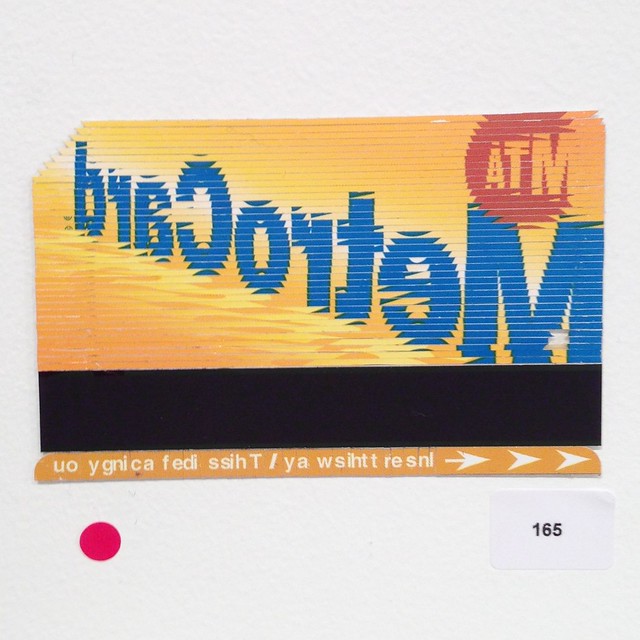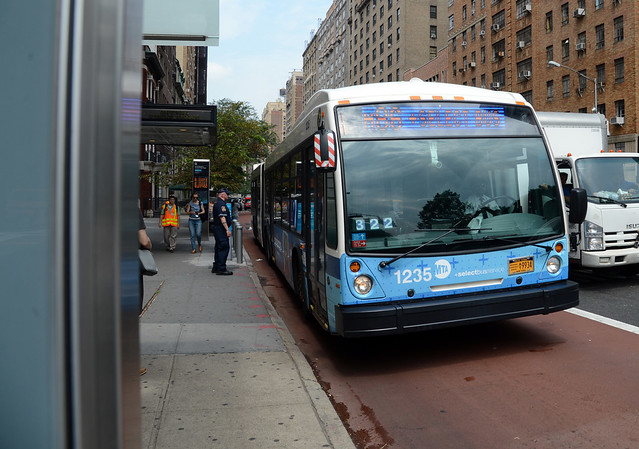
How the MTA opts to replace the Metrocard could have an effect on bus riders for decades to come. (Photo: Benjamin Kabak)
Can the MTA get a once-in-a-generation opportunity to overhaul its fare payment technology right? This is a question more important than many realize right now as the MTA finally gears up to usher in a replacement for the Metrocard and move its fare payment system into the 21st century. This is a question that plays more to buses rather than to subways, as subway riders will keep flocking to the system no matter how the fare payment technology works, and it’s a question that could solve the problem of declining bus ridership. It’s also a question one rider advocate group fears the wrong answer will emerge.
The story is simple: The MTA wants to replace the Metrocard with something leaner and meaner. The technology will likely rely on open payment standards popular in the payment card industry and will allow the MTA to shed the costs associated with running and maintaining a proprietary fare technology. It will be flexible enough to support pay-per-ride fares and bulk discounts (such as unlimited ride cards keyed to a time period). But will it support electronic proof of payment, a feature that could drastically improve bus service? The Riders Alliance is worried it won’t, and they’ve called upon the MTA to address this deficiency.
In a report released on Friday, the Riders Alliance laid out its case for electronic proof of payment. I’ll excerpt:
Right now the MTA’s RPF, with bids due July 13th, does not require “electronic proof of payment” technology, whereby users would have their payment validated electronically, rather that with a paper receipt…Why does it matter? Because one way to make buses faster and more reliable is to replace the current system, where everyone boards one by one at the front, with all-door boarding, where people could get on the bus through any available door. An all-door boarding system usually relies on inspectors who can board the bus and make sure riders have purchased tickets—today on Select Bus Service, by checking to see if the rider purchased a paper receipt at the bus stop. In the future, if the MTA is to consider rolling out all-door boarding to all bus lines citywide, a paper ticket system would likely be too onerous and expensive, making a digital system necessary. And if the MTA doesn’t require that the new fare payment system accommodate a digital inspection, bus riders could be stuck with a whole new generation of boarding slowly, one-by-one, at the front of the bus.
All-door boarding, facilitated by an electronic proof of payment system that allows for easy verification of payment, can significantly reduce bus travel times and save money—without increasing rates of fare evasion. A primary driver of delays at bus stops is the length of time required for all passengers to board…
The only buses in New York that allow all-door boarding are Select Bus Service routes, which require riders to pay at a machine before boarding the bus. SBS routes have seen speed increases from 16 to 22 percent and ridership gains between 10 and 20 percent in the first year after implementation. At the same time, enforcement from the NYPD’s Eagle Team have led to significant drops in fare evasion: in 2012, fare evasion on the Bx41 in the Bronx dropped by 74 percent and on the Bx12 by 80 percent after the deployment of SBS on those routes…The MTA estimates that off-board fare collection, combined with all-door boarding, is responsible for a 10 to 15 percent total improvement in travel time [for Select Bus Service routes].
We don’t currently have all-door boarding on buses because the MTA claims it would be far too expensive to install MetroCard readers throughout the city. The prices quoted often run into the low billions. Meanwhile, around North America, transit agencies in San Francisco, Seattle, Los Angeles and Montreal have introduced all-door boarding, and travel time reductions generally attributable to this improved boarding process run to around 15 percent across the board. It’s a no-brainer really.
For its part, the MTA has raised concerns over fare evasion. “We must balance convenience against the very real threat of fare evasion if ‘electronic proof of payment’ technology is ever to be viable,” agency spokesman Kevin Ortiz said to the Daily News. This, however, seems to be a symptom of Not-Invented-Here-itis, a frequent illness in NYC transit planning. As Streetsblog detailed on Tuesday, some targeted fare enforcement efforts on POP routes drive down fare evasion, and the economics dictate that faster bus service — which should drive up ridership — would pay for the cost of fare evasion. Creating a fare structure that incentivizes purchases of time-based fare cards could also help combat any concerns over fare evasion.
Ultimately, the MTA gets once chance to do this project right. Once they’ve locked in on a potential replacement for the Metrocard, making whole-sale changes will grow more difficult and costly. For the sake of a 21st century fare payment technology and, more importantly, for the sake of the city’s bus riders, electronic proof of payment should be a mandatory part of this next-gen solution.







